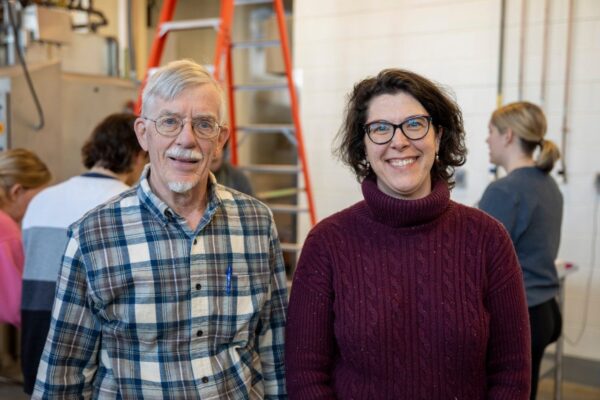Who doesn’t like the world’s most luxurious nut? Macadamia nuts melt in your mouth with every buttery bite.
But whatever your opinion on macadamia nuts, it’s important that dried fruits, nuts, and spices are free from bacteria that may cause human disease, as these raw agricultural products are an important component of food systems across the globe.
When foods such as sesame seeds, tree nuts, and spices are grown, they can pick up germs from the soil, water, or wildlife. Even during the process of getting these foods ready for us to eat, such as removing the outer shell of a nut, germs can sneak in. That’s why it’s vital to make sure these foods are safe before they get to our kitchen tables or into our mouths.
And that’s exactly what Monica Ponder, professor of food science and technology in the College of Agriculture and Life Sciences, and Tom Diller, professor of mechanical engineering in the College of Engineering, are doing with a four-year, $600,000 grant from the U.S. Department of Agriculture’s National Institute of Food and Agriculture.
A popular method of ensuring that these raw agricultural products are safe to eat is to use steam, kind of like a giant pressure cooker, to heat the food and kill the germs.
But it’s not just about heating the food. It’s important to heat it just right so that enough heat energy is transferred to kill common bacterial pathogens such as salmonella, making it safe to eat. To do this, food scientists are working with engineers to learn more about how heat transferred from saturated steam moves through different types of foods. They’re using new tools, special sensors, to measure the temperature and amount of heat energy better and ensure even distribution. These tools have not been used for food products in the past.

“If everything in the package doesn’t end up with the equal distribution of heat, we won’t kill the pathogens present,” Ponder said. “This will help us not only understand the time that it takes to kill a pathogen and still have a high a tasty, quality food product, but also help us better understand how to design food packaging to facilitate this transfer.”
Diller brought five mechanical engineering students to the College of Agriculture and Life Sciences’ Food Science Lab, lending their expertise through a capstone senior design project. This put a team of well-trained engineers about to finish their education to work on the project and focused their energies on the challenge under Diller’s guidance.
The student team looked at each aspect of the steam/vacuum process, equipping sensors throughout the different types of steamed foods to measure heat transfer both inside and outside a package. The students found large temperature differences between dried fruits and nuts steam pasteurized for the same times, so they turned that data into a model that may predict the optimal time and temperature for each type of food to protect the flavor of food while killing bacteria.
The goal is to make sure that every little piece of food, whether it’s a macadamia nut, a piece of dried apricot, or that perfect pistachio, gets the right amount of heat. The researchers will create a shareable data set that food processors can use to help them know exactly how much heat they need and how long to heat the food, depending on what kind of food it is.
The Virginia Tech researchers are collaborating with a company that specializes in vacuum steam processing, first at a small-scale, before testing the model in the large steam processing chambers.
And because of the researchers’ work, the next time you taste that buttery macadamia nut or concoct the perfect blend of spices, there will be no worries of the food being unsafe to eat.
By Max Esterhuizen

